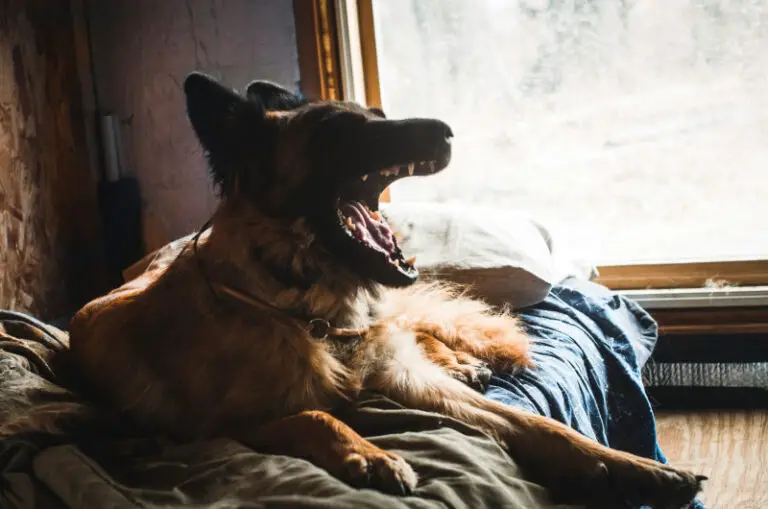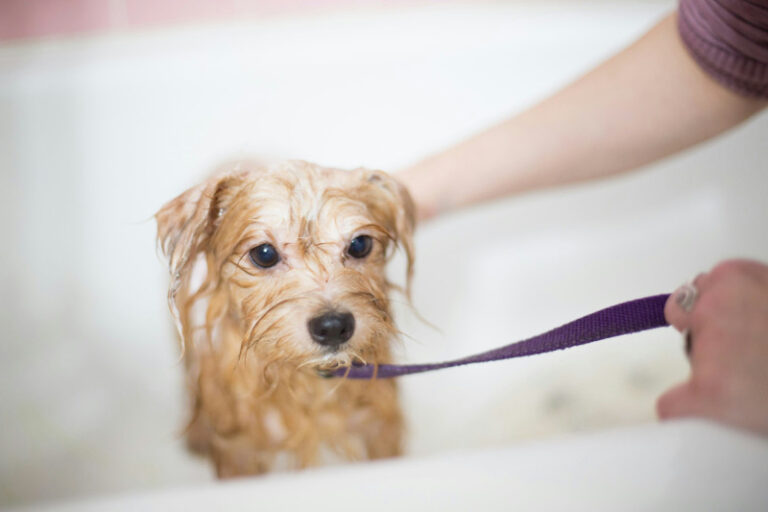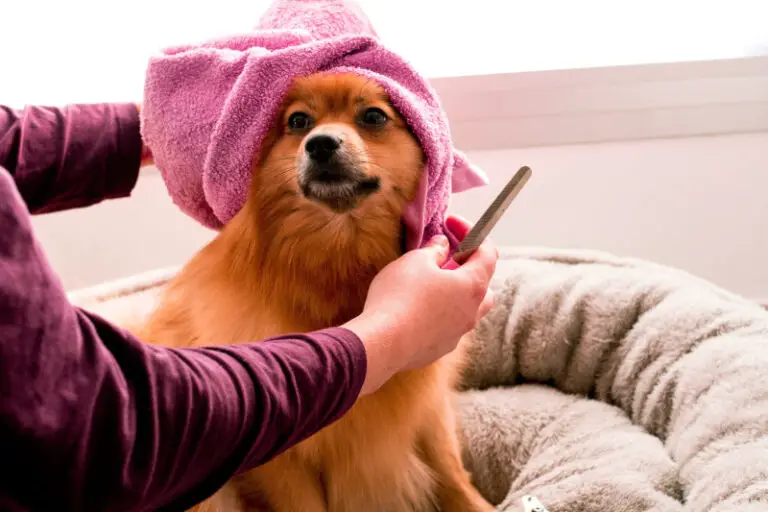Regular dog grooming is essential for maintaining your pet’s health and happiness. Not only does it keep your dog looking its best, but it also helps to prevent various health issues such as skin infections, matting, and parasites. Grooming your dog at home can be a rewarding experience, strengthening the bond between you and your furry friend. Understanding the essential steps involved in dog grooming can make the process smoother and more effective.
The benefits of proper dog grooming extend beyond aesthetics. Regular grooming sessions allow you to check for abnormalities such as lumps, bumps, or skin irritations that might require veterinary attention. Additionally, grooming helps to distribute natural oils throughout your dog’s coat, promoting a healthy and shiny appearance. By following a structured grooming routine, you can ensure that your dog remains comfortable and well-cared for.
In this guide, we will outline the seven essential steps of dog grooming, providing you with practical advice and techniques to make the process as efficient and enjoyable as possible. Whether you are a seasoned pet owner or new to the world of canine care, these steps will help you maintain your dog’s coat, nails, ears, and overall hygiene. For more detailed dog grooming tips, visit our [Dog grooming tips](https://sweetdoggo.com/grooming-and-care/) page.
Table of Contents
Preparation
Gathering the right grooming tools
Before you begin grooming your dog, it’s crucial to gather all the necessary dog grooming tools. Having the right equipment on hand will make the process more efficient and comfortable for both you and your pet. Essential tools include a high-quality brush or comb suited to your dog’s coat type, nail clippers, ear cleaning solution, and a gentle dog shampoo. For those with long-haired breeds, specialized tools for grooming long-haired dogs, such as detangling sprays and slicker brushes, can be particularly useful.
Investing in good-quality dog grooming supplies can make a significant difference in the grooming experience. For instance, a sturdy pair of nail clippers designed specifically for dogs will make dog nail trimming safer and more effective. Additionally, having a variety of brushes and combs can help you tackle different grooming tasks, from detangling mats to distributing natural oils for optimal dog coat care.
It’s also beneficial to have a grooming table or a non-slip mat to keep your dog steady during the grooming session. This can help create a more controlled environment, reducing the likelihood of accidents. By preparing all the necessary tools in advance, you can ensure a smoother and more enjoyable grooming experience for both you and your dog.
Creating a calm environment
Creating a calm and stress-free environment is essential for successful home dog grooming. Dogs are highly sensitive to their surroundings, and a chaotic or noisy environment can make them anxious, complicating the grooming process. Start by choosing a quiet, well-lit area where you and your dog can focus without distractions. This could be a bathroom, a dedicated grooming space, or even a quiet corner of your home.
To help your dog feel more at ease, consider playing soft, calming music or using a white noise machine to drown out any disruptive sounds. It’s also helpful to have some of your dog’s favorite treats on hand to reward good behavior and create positive associations with grooming. If your dog is particularly anxious, you might want to consult your veterinarian for additional pet grooming advice on how to keep your dog calm during grooming sessions.
Establishing a consistent dog grooming schedule can also contribute to a more relaxed environment. When your dog knows what to expect, they are less likely to become stressed or agitated. Consistency helps build trust and makes each grooming session more predictable and manageable. By taking the time to create a calm environment, you can make the grooming process more enjoyable and effective for both you and your dog.
Washing and Drying
Choosing the appropriate shampoo
Selecting the right shampoo is a critical step in the dog grooming process. The type of shampoo you use can significantly impact your dog’s skin and coat health. It’s essential to choose a shampoo specifically formulated for dogs, as human shampoos can be too harsh and disrupt the natural pH balance of your dog’s skin. When selecting a shampoo, consider your dog’s specific needs, such as skin sensitivity, coat type, and any existing skin conditions.
For dogs with sensitive skin, opt for a hypoallergenic shampoo that is free from harsh chemicals and fragrances. If your dog has a specific skin condition, such as allergies or dermatitis, consult your veterinarian for pet grooming advice on the best medicated shampoos. For general dog coat care, a gentle, moisturizing shampoo can help maintain a healthy and shiny coat. Additionally, if you are grooming long-haired dogs, consider using a conditioner to help detangle and soften the fur.
It’s also important to read the labels and follow the manufacturer’s instructions for the best results. Some shampoos may require dilution, while others are ready to use straight from the bottle. By choosing the appropriate shampoo, you can ensure that your dog’s skin and coat remain healthy and well-maintained.
Proper techniques for bathing and drying
Bathing your dog correctly is essential for effective home dog grooming. Start by thoroughly brushing your dog’s coat to remove any loose fur, tangles, or mats. This step is crucial for dog fur maintenance and ensures that the shampoo can penetrate the coat evenly. Once your dog is brushed, place them in a bathtub or a large basin with a non-slip mat to prevent slipping.
Use lukewarm water to wet your dog’s coat thoroughly, avoiding the eyes and ears. Apply the shampoo, starting from the neck and working your way down to the tail. Use gentle, massaging motions to work the shampoo into a lather, ensuring that you cover all areas, including the underbelly and paws. Rinse thoroughly to remove all traces of shampoo, as any residue can cause skin irritation.
After rinsing, gently squeeze out excess water from your dog’s coat. Use a clean, absorbent towel to pat your dog dry, being careful not to rub too vigorously, as this can cause tangling and discomfort. For dogs with thick or long fur, you may need to use a blow dryer on a low, cool setting to ensure the coat dries completely. Keep the dryer moving to avoid overheating any one area and always monitor your dog’s comfort level.
Proper drying techniques are essential for preventing skin issues and maintaining a healthy coat. By following these steps, you can ensure that your dog is clean, comfortable, and well-groomed. For more detailed canine grooming techniques, consider consulting a puppy grooming guide or seeking professional pet grooming advice.
Grooming Details
Brushing and detangling fur
Brushing and detangling your dog’s fur is a fundamental aspect of dog grooming that promotes healthy skin and a shiny coat. Regular brushing helps to remove loose hair, dirt, and debris, while also preventing mats and tangles that can cause discomfort and skin issues. The frequency and type of brush you use will depend on your dog’s coat type. For instance, short-haired breeds may only require weekly brushing, while long-haired dogs might need daily attention.
Start by selecting the appropriate brush for your dog’s coat. Slicker brushes are excellent for removing tangles and mats in long-haired breeds, while bristle brushes work well for short-haired dogs. Begin brushing at the head and work your way down to the tail, using gentle, even strokes. Pay special attention to areas where mats are likely to form, such as behind the ears, under the legs, and around the collar.
If you encounter a mat, use a detangling spray and a comb to gently work it out. Avoid pulling or cutting the mat, as this can cause pain and damage to your dog’s skin. Regular brushing not only keeps your dog’s coat looking its best but also stimulates blood circulation and distributes natural oils, contributing to overall dog coat care. For more detailed dog brushing methods, consider consulting a puppy grooming guide or seeking professional pet grooming advice.
Trimming nails and cleaning ears
Dog nail trimming and ear cleaning are essential components of a comprehensive grooming routine. Overgrown nails can cause discomfort and lead to issues with walking, while dirty ears can become a breeding ground for infections. Regular maintenance of these areas is crucial for your dog’s health and well-being.
When trimming your dog’s nails, use a pair of high-quality clippers designed specifically for dogs. Hold your dog’s paw firmly but gently, and trim the nails in small increments to avoid cutting into the quick, which can cause bleeding and pain. If you’re unsure about the proper technique, consult your veterinarian or a professional groomer for guidance.
Cleaning your dog’s ears is equally important. Use a vet-approved ear cleaning solution and cotton balls or pads. Gently lift your dog’s ear flap and apply the solution as directed. Massage the base of the ear to help loosen any debris, then use the cotton ball to wipe away the dirt. Avoid using cotton swabs, as they can push debris further into the ear canal and cause damage. For more detailed dog ear cleaning tips, consult your veterinarian or a reliable puppy grooming guide.
Checking and brushing teeth
Oral hygiene is often overlooked in dog grooming, but it is vital for your pet’s overall health. Regularly checking and brushing your dog’s teeth can prevent dental issues such as plaque buildup, gum disease, and bad breath. Incorporating dental care into your dog grooming schedule can significantly improve your dog’s quality of life.
Use a toothbrush and toothpaste specifically designed for dogs. Human toothpaste contains ingredients that can be harmful to dogs, so it’s essential to use pet-safe products. Start by allowing your dog to become familiar with the toothbrush and toothpaste. Let them sniff and taste the toothpaste to create a positive association.
When brushing, lift your dog’s lip to expose the teeth and gums. Use gentle, circular motions to clean the teeth, focusing on the gum line where plaque tends to accumulate. Aim to brush your dog’s teeth at least two to three times a week, gradually increasing the frequency as your dog becomes more comfortable with the process.
Regular dental check-ups with your veterinarian are also important for maintaining your dog’s oral health. By incorporating these grooming details into your routine, you can ensure that your dog remains healthy, happy, and well-groomed. For more comprehensive canine grooming techniques, consider seeking professional pet grooming advice or consulting a detailed puppy grooming guide.
Conclusion
Recapping the seven key steps of dog grooming, we begin with preparation, which involves gathering the right dog grooming tools and creating a calm environment. This foundational step sets the stage for a smooth and stress-free grooming session. Next, washing and drying your dog with the appropriate shampoo and proper techniques ensure that your dog’s coat and skin remain healthy and clean. This step is crucial for dog fur maintenance and overall hygiene.
The grooming details encompass brushing and detangling fur, trimming nails, cleaning ears, and checking and brushing teeth. Regular brushing helps to remove loose hair and prevent mats, while nail trimming and ear cleaning are essential for preventing discomfort and infections. Dental care, often overlooked, is vital for maintaining your dog’s oral health and preventing dental issues. Each of these steps plays a critical role in ensuring that your dog remains well-groomed and healthy.
By following these seven steps, you can provide comprehensive care for your dog, addressing all aspects of their grooming needs. Whether you are a seasoned pet owner or new to home dog grooming, these steps offer a structured approach to maintaining your dog’s coat, nails, ears, and teeth. For more detailed dog grooming tips, visit our [Dog grooming tips](https://sweetdoggo.com/grooming-and-care/) page.
Maintaining a consistent grooming routine is essential for your dog’s health and well-being. Regular grooming sessions not only keep your dog looking their best but also allow you to monitor their health closely. By establishing a routine, you can catch potential health issues early, such as skin irritations, lumps, or dental problems, and address them promptly.
Consistency also helps to build trust and familiarity between you and your dog. When your dog knows what to expect, they are less likely to become anxious or stressed during grooming sessions. This makes the process more enjoyable and manageable for both of you. Incorporating grooming into your regular pet care routine can strengthen the bond between you and your dog, making them feel loved and cared for.
In conclusion, the seven steps of dog grooming provide a comprehensive guide to keeping your dog healthy, happy, and well-groomed. By following these steps and maintaining a consistent grooming routine, you can ensure that your dog remains comfortable and well-cared for. Whether you are grooming long-haired dogs or short-haired breeds, these techniques and tips will help you provide the best care for your furry friend.



